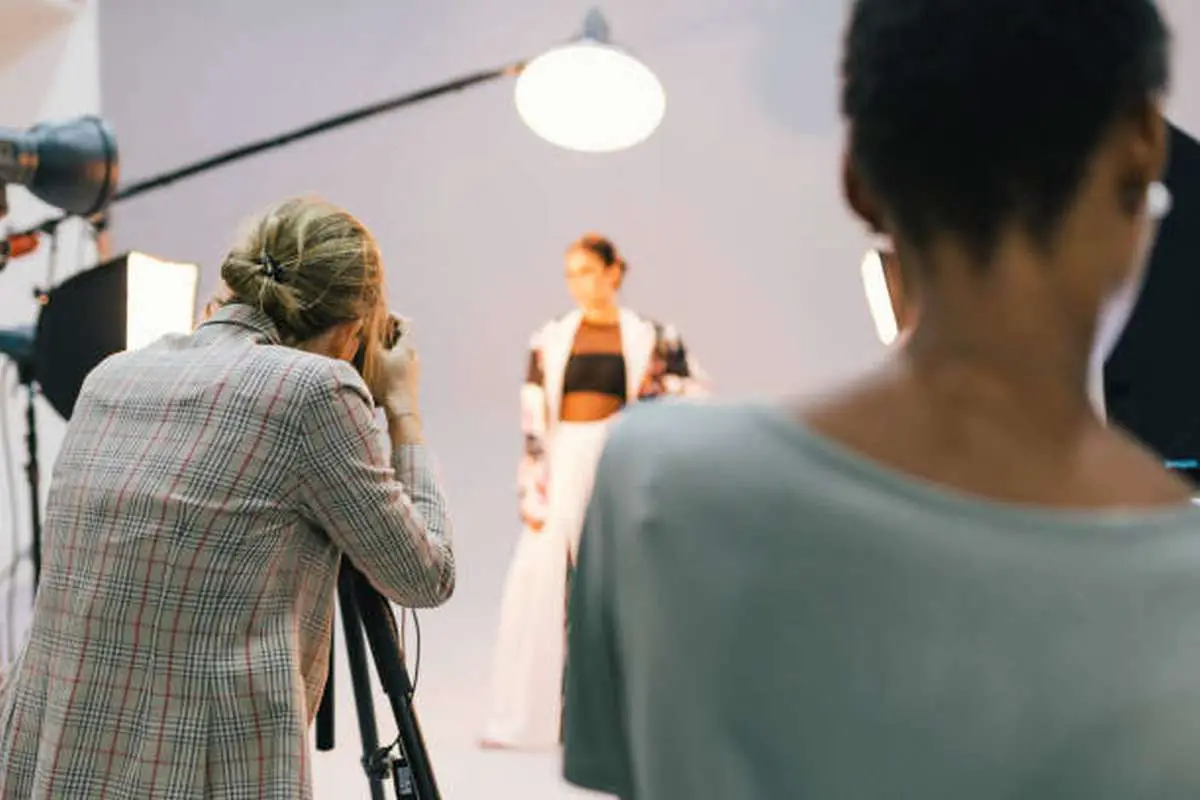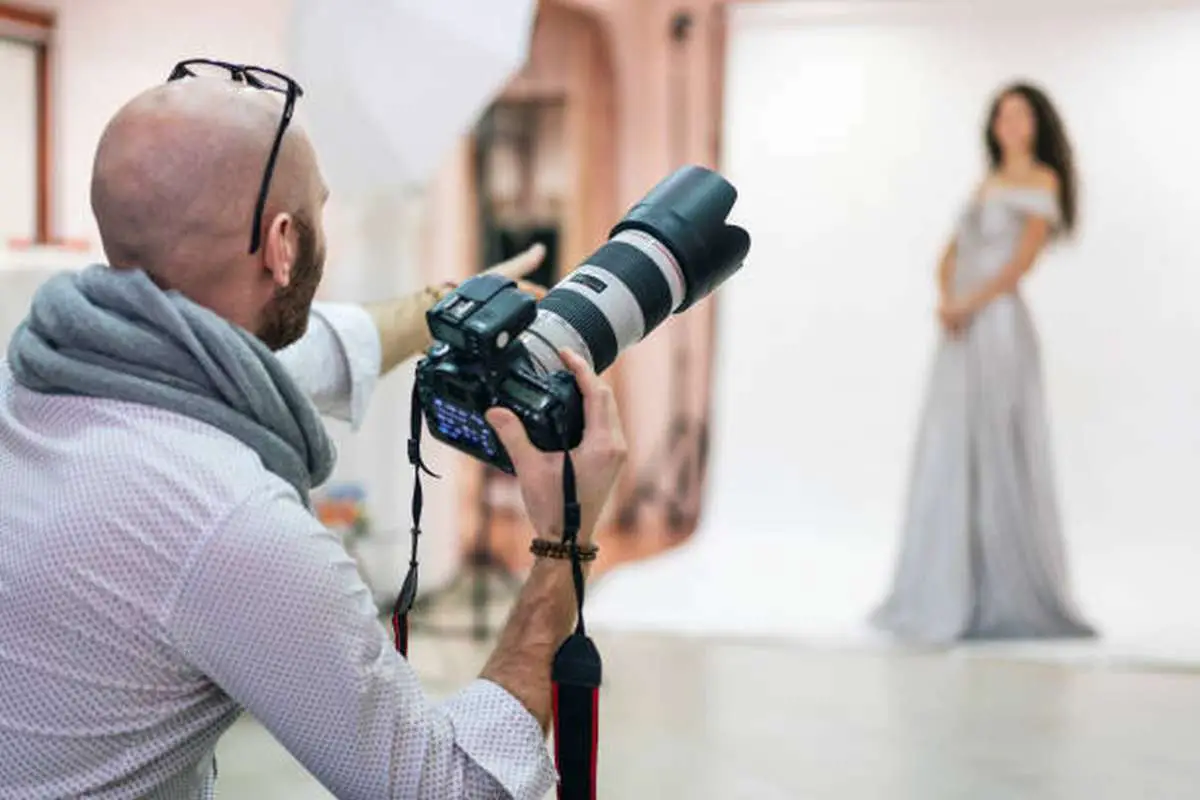Fashion photography is a highly specialised area within the photography world, demanding a mix of technical expertise, creativity, and knowledge of current fashion trends.
This guide offers step-by-step advice on becoming a fashion photographer, covering essential skills, equipment, and career-building strategies.
Let’s get straight to the point
To start a career in fashion photography, you'll need technical skills, creativity, and industry knowledge. Begin with essential gear like a high-resolution DSLR camera, lenses, lighting, and editing software.
Build your lighting, composition, and post-production skills, and develop a focused portfolio showcasing your best work. Networking is crucial, so attend industry events and connect on social media.
Gaining experience by assisting established photographers can provide valuable insights. Define your unique style and stay updated on fashion trends to keep your work relevant.
Success involves continuous learning, networking, and potentially relocating to fashion hubs or establishing an online presence to reach clients globally.
Essential Gear for Fashion Photography

The most crucial equipment in fashion photography is a high-quality DSLR camera. Fashion photography often requires high-resolution images, so choosing a camera with a good megapixel count is essential. Here’s a list of the basic equipment you’ll need:
- Digital Camera: Invest in a high-quality DSLR or mirrorless camera that supports high-resolution images.
- Lenses: A fast-aperture lens, such as a 50mm with an aperture between 1.2 and 1.8, is ideal for capturing sharp, well-lit images, even in low light.
- Lighting Equipment: Basic lighting gear can include two halogen lights with reflectors, a cost-effective setup for beginners.
- Editing Software: Proficiency in Adobe Photoshop or Lightroom is essential for post-production work, where you can enhance and polish your images.
What Is Fashion Photography?
Fashion photography is a unique field that blends the elements of structure, lighting, and exposure with models' expressions and attire.
Successful fashion photographers are skilled in capturing the essence of the clothing and the scene's mood, balancing the technical and artistic aspects to create images that resonate with audiences.
The Importance of Fashion Photography Skills
Fashion photography requires more than just an eye for fashion. A good fashion photographer must understand lighting, composition, and exposure and how to bring out the best in their models.
This skill set allows photographers to create images that do justice to the models and the garments they showcase.
Steps to Launch a Career in Fashion Photography
Building a career in fashion photography is a journey that combines technical skills with industry networking. Follow these steps to help establish yourself as a professional.
1. Study Photography
Although a formal education is not mandatory, studying photography can provide valuable knowledge and skills. Many universities and photography schools offer programs where you can learn about art history, digital media, and studio practices.
Courses in lighting, composition, and digital editing can be particularly helpful for aspiring fashion photographers. Additionally, some colleges offer fashion-specific photography courses, covering topics like editorial shooting and fashion magazine styles.
2. Build Your Portfolio
A portfolio is essential in fashion photography. This should be a collection of your best work that demonstrates your skills and style.
You may include high-quality images from personal projects or collaborations with friends when starting. As you gain experience, replace these with more professional shots.
Your portfolio should be:
- Focused: Only include your best fashion photography work. Avoid adding unrelated images, such as landscapes or still-life photos.
- Regularly Updated: As you improve and gain experience, keep updating your portfolio to showcase your latest and best work.
3. Network In The Industry
Networking is essential in fashion photography, as it’s a competitive field where connections can lead to new opportunities. Attend fashion events, gallery openings, and photography workshops to meet others in the industry.
Additionally, reach out on social media platforms like Instagram, where many industry professionals connect and showcase their work.
Key Skills and Qualities of a Fashion Photographer
Fashion photography involves working closely with models, stylists, and clients, which requires a particular skill set beyond technical photography abilities.
- Creativity: A unique creative vision can set you apart from other photographers.
- Adaptability: Fashion photographers must be able to shoot in various locations and lighting conditions, sometimes with minimal preparation time.
- Attention to Detail: It is critical to ensure that each element—from lighting to styling—fits the intended look of the shoot.
- Editing Skills: Editing is a major part of fashion photography. Knowing how to retouch and enhance images to match the fashion industry’s high standards is crucial.
Gaining Experience in Fashion Photography
Experience in fashion photography often begins with assisting established photographers on set. Working as an assistant allows you to observe the process and learn about different aspects of the industry, from coordinating with stylists to adjusting lighting and managing shoot logistics.
While assisting, be sure to:
- Ask Questions: Learn as much as possible about lighting, posing, and equipment.
- Stay Professional: Be reliable and respectful to build a good reputation, which could lead to further opportunities.
- Network: Establish connections with stylists, makeup artists, and other professionals who may be valuable contacts in the future.
4. Develop Your Style
Every successful fashion photographer has a unique style that defines their work. Experiment with various techniques and aesthetics until you find your distinctive approach.
Study the work of renowned fashion photographers and fashion magazines to see what resonates with you, and let those influences shape your artistic vision.
Working with Models and Posing Tips
Fashion photography often requires directing models to achieve a specific look or mood. Here are some tips to help you guide models effectively:
- Discuss the Concept: Communicate the vision and mood of the shoot to the model.
- Provide Guidance: Guide models with specific directions to capture the desired look. Avoid generic phrases like “look natural” and instead provide clear instructions.
- Encourage Relaxation: Help the model feel comfortable so they can bring out their best expressions. Sometimes, a casual conversation can ease nerves and lead to better shots.
- Experiment with Angles: Shoot from various angles and perspectives to capture diverse poses and expressions, enhancing the overall visual appeal.
Setting Up and Organising Shoots
Scheduling shoots with clients involves careful planning, often requiring coordination with other professionals and possibly travel arrangements. Each shoot should be planned to meet the client’s needs, so be flexible with shoot settings, whether in a studio or on location.
5. Keep Up With Fashion Trends
Fashion photography is closely tied to the fashion industry, so staying updated on trends and styles is crucial. Follow fashion magazines, read industry blogs, and attend fashion shows to stay informed on what’s trending.
This knowledge will help you align your shoots with current fashion styles and potential clients' preferences.
Editing Fashion Photographs
Editing is a vital part of the fashion photography process. Here are some tips for effective editing:
- Adjust Exposure and Colour: Fine-tune exposure levels and colours to ensure the garments appear vibrant and true to life.
- Retouch Flaws: Use tools to retouch imperfections, ensuring the image meets the industry’s high standards.
- Experiment with Styles: Post-processing is an opportunity to add your personal touch to photos through colour grading or creative edits.
The Path to Success in Fashion Photography

Building a successful career in fashion photography involves continuous improvement and a commitment to high standards. Here’s a summary of the steps to achieve long-term success:
- Maintain an Updated Portfolio: Showcase your evolving skill set and professional growth with regular portfolio updates.
- Build a Reliable Network: Connections with industry professionals can provide valuable opportunities.
- Develop Business Skills: As an independent photographer, managing administrative tasks, from finances to contracts, is essential.
- Stay Motivated: The industry can be competitive, but you can establish yourself in the field with passion and persistence.
Expanding Your Reach
Fashion photography often demands relocation to a major fashion hub, like New York or Paris, to access more significant opportunities. Moving to a fashion capital can open doors to larger, higher-profile projects and collaborations.
If relocating isn’t feasible, please let us know your work on online platforms. A well-curated website and active social media presence can help you reach clients and collaborators worldwide.
Conclusion
Fashion photography is a rewarding yet challenging career that requires a combination of technical, creative, and business skills.
With dedication to mastering your craft, building connections, and developing a unique style, you can create a fulfilling career in this exciting field.
By staying current with industry trends, investing in quality equipment, and continuously honing your editing skills, you can succeed as a fashion photographer and make a meaningful impact in the fashion world.
FAQs About Fashion Photographer
- Catalog Photography. Catalog photography is perhaps the simplest of the 4 fashion photography styles. ...
- High Fashion Photography. ...
- Street Fashion Photography. ...
- Editorial Fashion Photography.
But in the end, fashion photography isn't about them. It's all about the clothing. Setting your models up into poses that create movement in the clothing, such as twirls, jumps and even running, lets the viewer see how the garments move and what it's like to live in the clothing.

